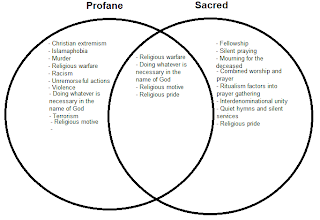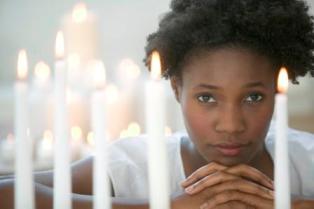A person reflecting in their own sacred space
I did my best to sit down in my own quiet and sacred area, being cautious not to be distracted by my friends or any other anomalies. The first thing I did for five minutes, when I sat down was look around, but without destroying my sacred space. I was surrounded by trees and shrubs, but I could also see the leaves on the lush grass. This gave me a peaceful feeling, and for the next five minutes I decided to close my eyes. I could faintly hear the birds chirping, the wind blowing, people chatting quietly in the distance - yet, it was still a sense of peace. After this, I began to finally reflect on the conventions of my spirituality - such as my morals, values and opinions. At this, I began to realise some of my values consisted of treating others as equals, being humble in all things, a healthy devotion to God and of course a cautious reading of the sacred text, or in other words the Bible. As a Christian, I still believe sacred space is very important to me, as it gets my bearings and allows me not only to pray to God more efficiently, but also understand where I am at with my spirituality.
A representation of spiritual enlightenment
I also was able to reflect back on my life's accomplishments, when I decided to become a Christian and the history of my journey with my spirituality. I realised it had been quite a rough one, and that it had never been an even line of "being a Christian all my life". However, now that I am one, I feel that I can value other things too such as generosity and faith. Another realization, when I was meditating in my sacred space, is that by following these values, it made me more happier and more fulfilled. Truly, I asked myself - why do I even have a religion? Why am I Christian? I realized it is because it helps paint a purpose in my life, and allows me to walk a path which teaches me ethics and moral codes which are essential to having a fruitful life, whilst connecting with God and thanking him for the fruit that he has grown in my life as well.










